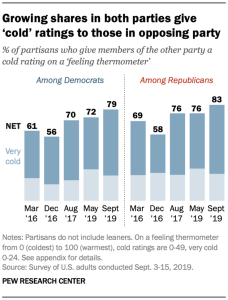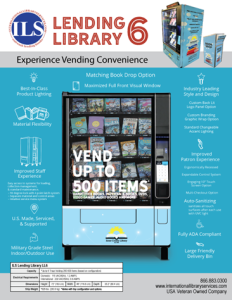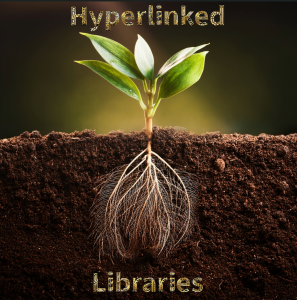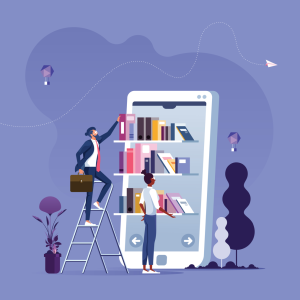
One Small Step (OSS) is an initiative to build stronger communities everywhere. It is the project of StoryCorps, a national program across libraries to facilitate discussions, community message boards, listening sessions, and more with the intention of fostering connections in communities who may otherwise not have opportunities to learn or ask questions with each other (StoryCorps, n.d.). The program’s intention is to create a safe space to spark dialogue in a highly divided society who may not always see eye to eye on hot topics. Discussions on social and political issues are happening virtually with an increasing diverse population of social media users and online forums. The public sphere as we know it today has evolved to allow participation from nearly all in a new digital era. “As of the end of 2021, mobile network coverage has reached 95% of the global population, with 88% covered by 4G mobile networks” meaning anyone with a device or access to a device can join the conversation and even create digital networks (Zhao and Wang, 2023; Tufekci, 2017). The public sphere as Jürgen Habermas developed the idea, has been strongly criticized as being, “idealistic, Eurocentric and unwittingly patriarchal” (Goode, 2005, p.1). The eighteenth century’s public sphere was compromised of the wealthy and aristocracy which excluded substantial groups of people.
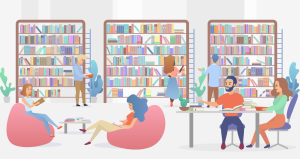
What can be done to keep the momentum of an inclusive and participatory public sphere?
Libraries have developed initiatives to attempt to facilitate discourse that may otherwise not happen in communities. In doing so, communities grow stronger and have a strong understanding of their members by creating a sense of community and building reciprocal relationships (Evers and Essen, 2024). StoryCorps @ your library (SCL) is a project between StoryCorps and the American Library Association (ALA, n.d.). The idea behind it is that listening to stories is just as important to sharing one’s own story. Through this program, a library would host an interview between two individuals, who know each other, about what matters the most to them. The conversation would be recorded to preserve and share it. Listening to other people’s stories, perspectives, and experiences allows one to expand our understanding of each other. The tools to do this type of work appears straightforward, allowing for people to participate and adding to the collection of stories. One Small Step is a program being tried out in libraries which seeks to connect people with opposing views to find common ground during an interview (StoryCorps, n.d.).
Gordon Allport’s contact hypothesis suggests interactions between groups may develop tolerance and acceptance towards each other, under specific criteria such as equal status and common goals. Although one’s stereotypes of others may not disappear after making contact, they grow to like others despite it (American Psychological Association, n.d.). There may be limitations or conditions for the concept of contact to work, but I believe that “virtually” contacting or connecting with people may be as effective to achieve the same results of growing tolerance or acceptance for others. Stories shared online allow people to learn and engage with people around the country and even the world.
Bonus
A bonus to introducing programs such as these is the development of social capital which is defined as “the norms and networks that are established between people and communities that give rise to greater levels of trust, and the ability of people to work together to solve problems” (Johnson, 2012, p. 52). Studies have shown libraries are more than information hubs and books. They have the ability to interact with communities, develop personal relationships with library users, but also welcome nonusers by constantly developing services for all. Frequent library users build trust and relationships with library staff which in turn create cohesive and healthier communities, which is the stated goal for many libraries. People and connections are at the root of the work of libraries today. As David Weinberger states, “In fact, the real business is the set of connections among people” (Levine et al., 2000).
References:
Adobe. (n.d.). Young people sitting on comfy sofa and at table with armchairs studying and reading. Public library concept gradient flat vector illustration.
Adobe. (n.d). Group of people making heart from puzzle pieces on white background, vector illustration in flat style.
American Psychological Association. (n.d.). All you need is contact. Monitor on Psychology. https://www.apa.org/monitor/nov01/contact
Evers, A., & Essen, J. von (Eds.). (2024). The Interplay of civic engagement and institutionalised politics: In search of intermediating capacities (1st ed.). Springer International Publishing. https://doi.org/10.1007/978-3-031-54231-2
Goode, L. (2005). Jürgen Habermas: democracy and the public sphere (1st ed.). Pluto Press.
Levine, R., Locke, C., Searls, D., & Weinberger, D. (2000). The cluetrain manifesto: the end of business as usual. Basic Books.
StoryCorps. One small step libraries. (n.d.). https://storycorps.org/discover/onesmallstep/oss-libraries/
Tufekci, Z. (2017). Twitter and tear gas : the power and fragility of networked protest. Yale University Press.
Zhao, Y., Wang, M. (2023). Digital sociology: origin, development, and prospects from a global perspective. The Journal of Chinese Sociology., 10(1), 19–21



